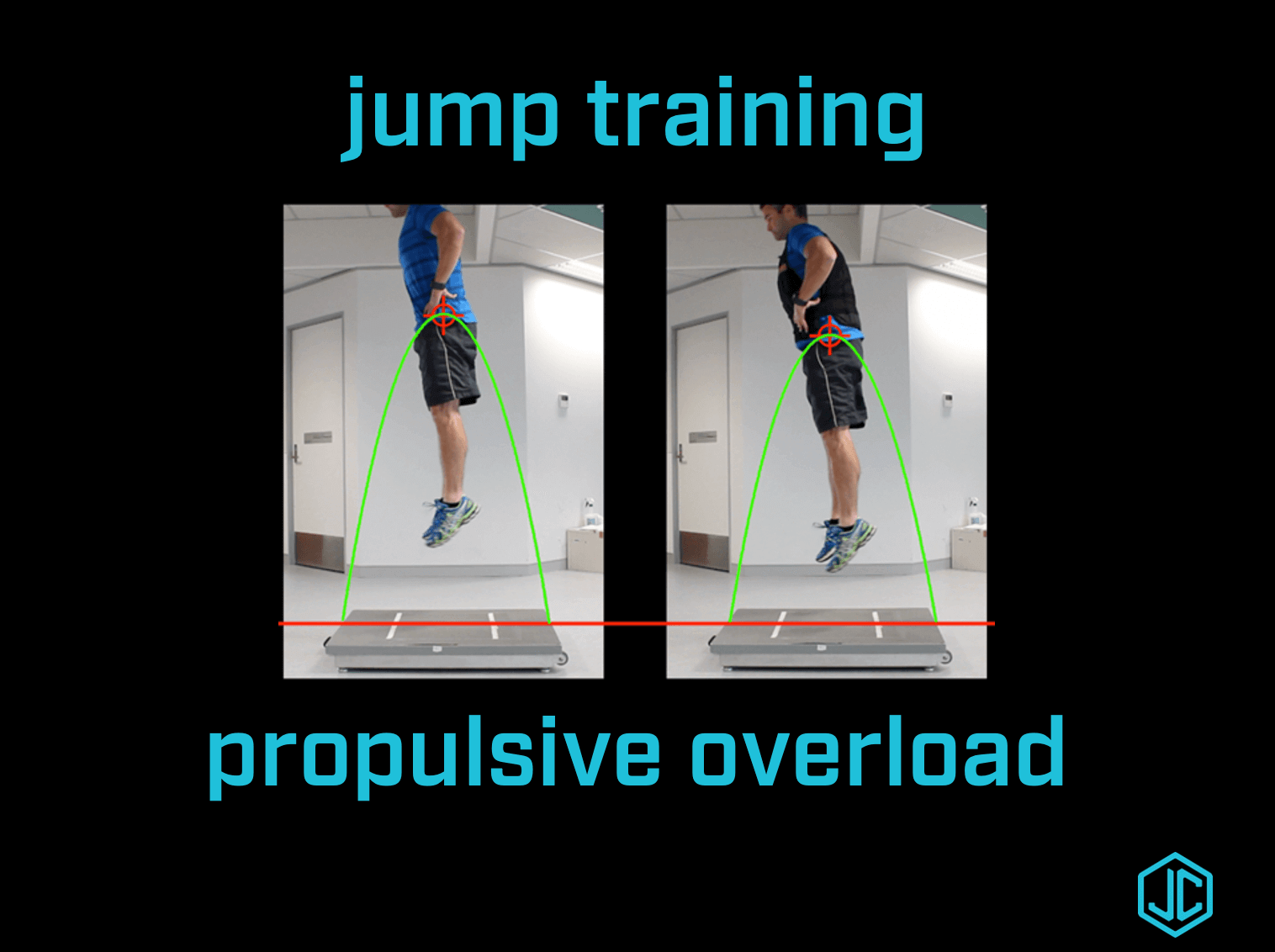
Can we overload the propulsive phase of the jump without overloading the landing phase? For sure. I would like to share with you how wearable resistance (WR) does this. It is not that intuitive as you would think as soon as you add load to a person the ground reaction forces (GRF) on landing would naturally be greater as the athlete is heavier. This is not the case. Why?
Well your GRF is a function of your mass and its acceleration, as well as the effect of the acceleration due to gravity. If you jump higher the effect of gravity on your centre of mass (COM) is greater. However, with WR you are heavier and so you don’t jump as high and therefore the gravitational effects are less, the net change in the landing GRF minimal. I have tried to show this in the diagram where you see the COM of the athlete wearing the vest has less displacement.
So WR is providing a propulsive overload whilst not affecting the landing phase to any great extent. If you want to read further, the article below gives you some deeper insights.
Macadam et al. (2017). Acute kinematic and kinetic adaptations to wearable resistance during vertical jumping.